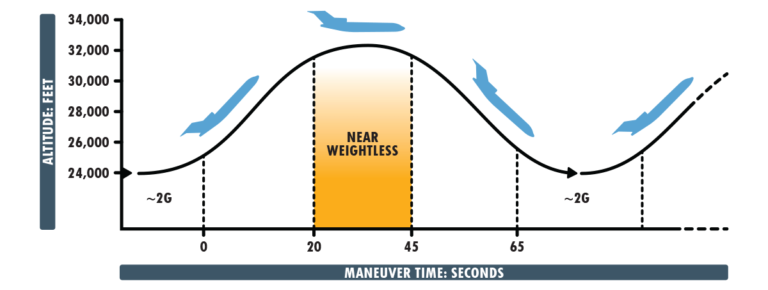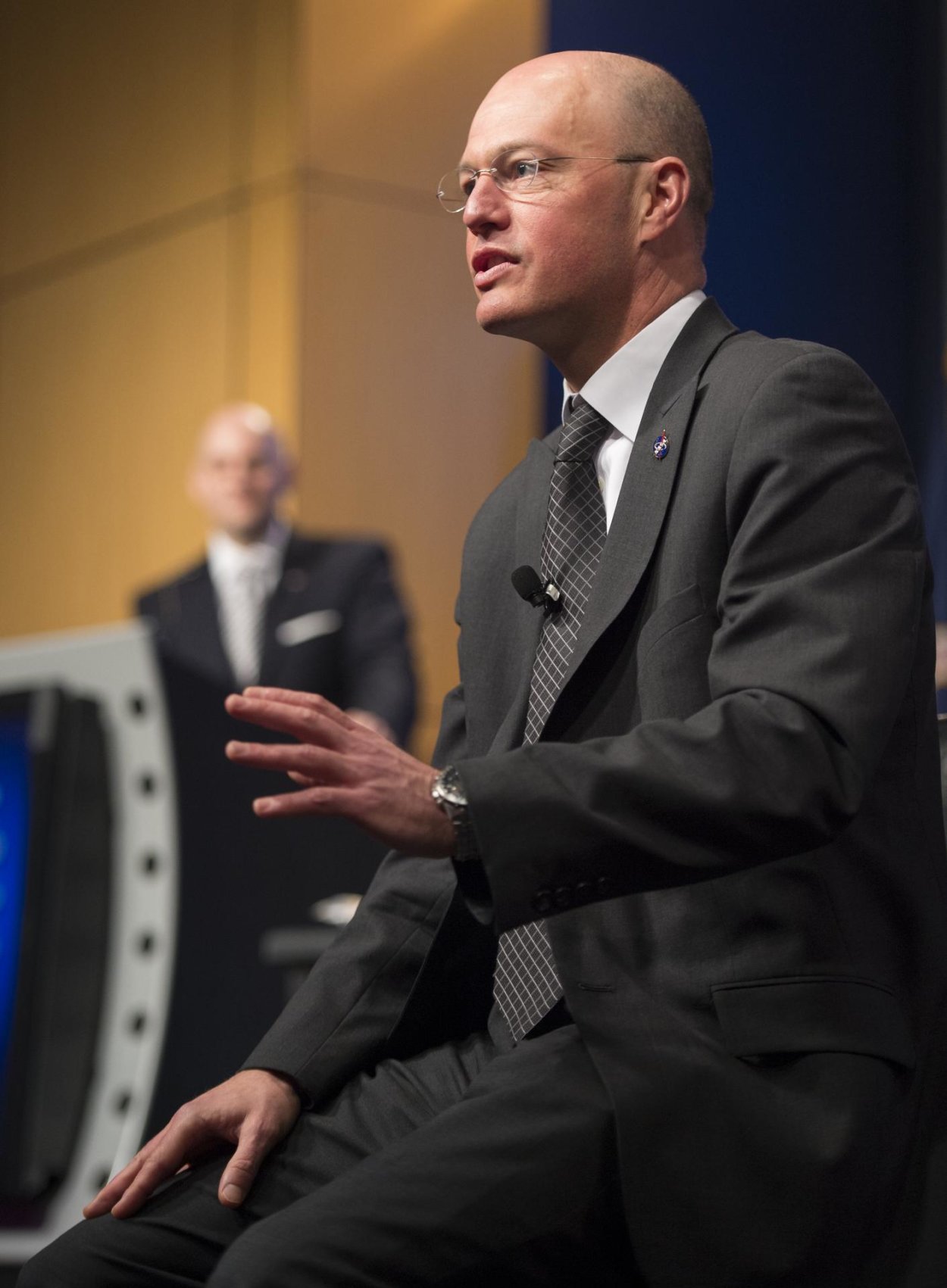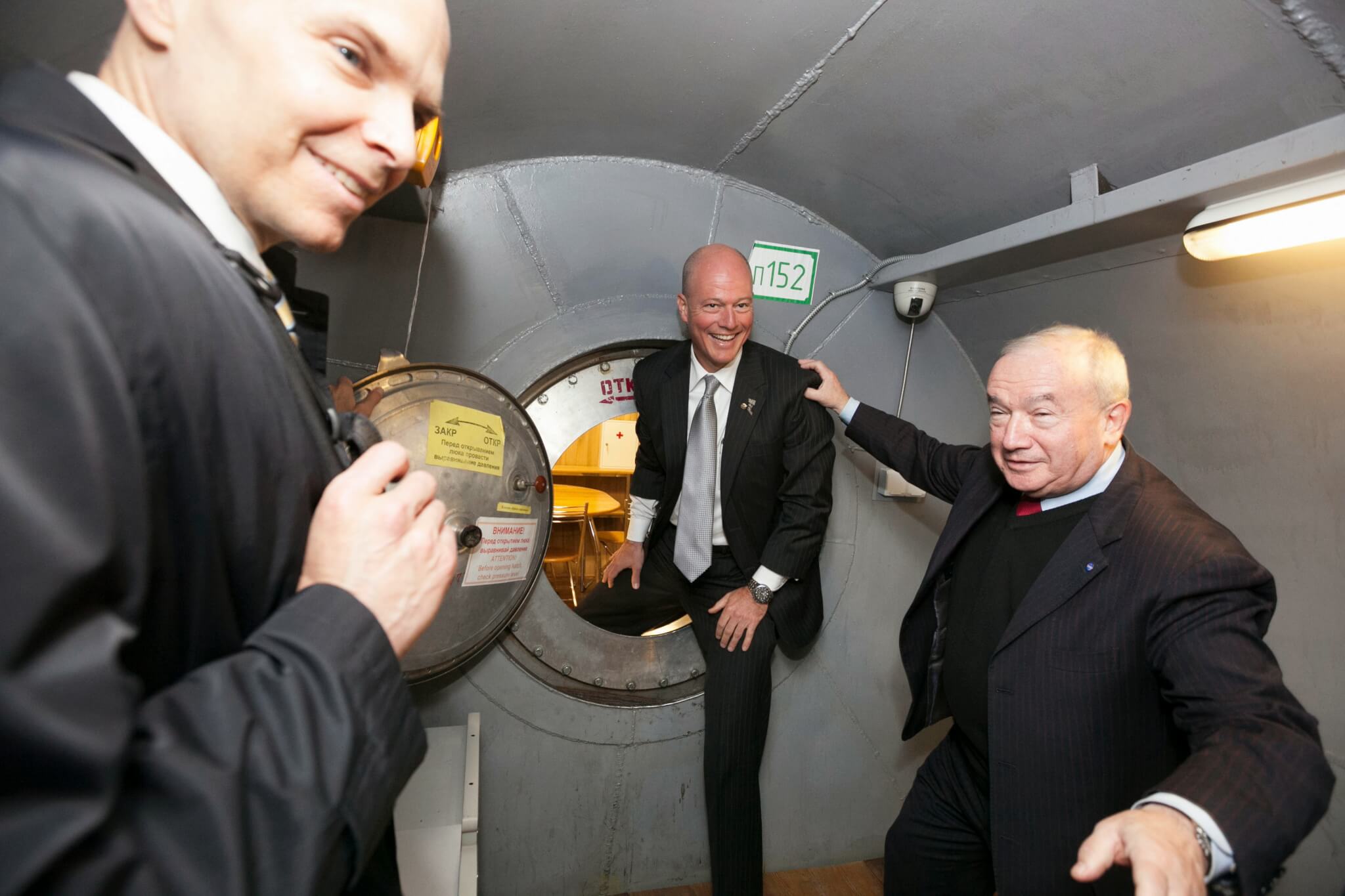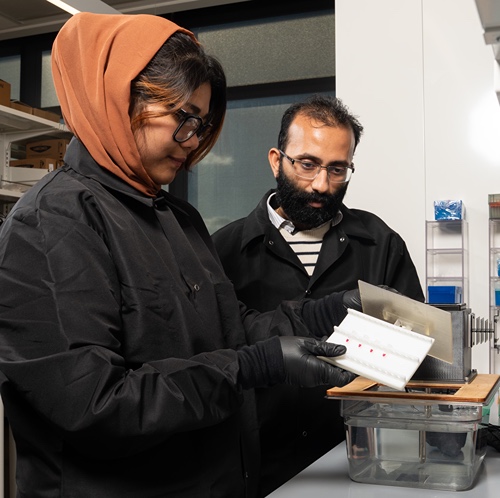Scientist’s vision shaped NASA research, with hopes of doing the same at Purdue
A germinated seed sends shoots above the soil to search for light while roots move down in search of nutrients and water. It happens like that each and every time because of Earth’s gravity.
But what about where there is little or no gravity? What about during a prolonged mission in space, or a trip to Mars, which would require food grown in transit or on the red planet.

Marshall Porterfield
Purdue University’s Marshall Porterfield has had his hands in research addressing those issues for more than 20 years. In his own lab, Porterfield’s interests in biology and engineering opened doors to early collaborations that led to cutting-edge technologies.
“It’s easy to forget now that 10-15 years ago, that interface wasn’t so well-developed and obvious,” said Jenna Rickus, associate vice provost for teaching and learning, professor of agricultural and biological engineering, and a longtime collaborator with Porterfield. “Marshall was way ahead of the curve on that, and particularly this interface of engineering and biology. It enabled him to make a lot of impact in a broad range of areas.”
THE VOMIT COMET
Over the years, Porterfield has amassed around a half dozen patents for different sensors.
One employed synthetic DNA and carbon nanotubes to make more accurate measurements in diabetes research. Another used black platinum and carbon nanotubes to measure plant hormones. And still another used fiber-optics to measure oxygen intake rates that could be used in a number of research arenas, from plant root development to the testing of the effectiveness of chemotherapy drugs.
“Marshall was way ahead of the curve on that, and particularly this interface of engineering and biology. It enabled him to make a lot of impact in a broad range of areas.”
It was another project, however, funded by a $2 million NASA grant, that started answering questions about gravity and seedling development. Porterfield built lab-on-a-chip technology that could study microscopic fern spores in a range of microgravity fields.
The technology went up on NASA’s famed “vomit comet,” a fixed-wing, reduced-gravity aircraft that can provide near-weightless periods to train astronauts and conduct scientific research. During these flights, the gravity levels fluctuate between 20-30 seconds of microgravity and the same period of time in 2 Gs. The experience was invigorating, both scientifically and personally.
“The key to a successful, incident-free flight experience is to mind the flight leader’s calls,” said Porterfield, who was on a flight in 2006. “When you hear ‘feet down coming out’ you know that microgravity and free-floating are about to end and the 2 G slam is going to hit you.”


Calcium signaling is a key component of cell polarization, which causes shoots to grow up and roots to grow down with gravity. Porterfield’s lab-on-a-chip technology that launched in the reduced-gravity aircraft could measure calcium signaling in fern spores in real time.
Later innovations would turn the lab into a CD with chambers to hold multiple fern spores. The spinning of the CD creates different levels of gravity in the chambers based on their proximity to the center or edge of the disc. With measurements recorded in real time, scientists could see how different levels of gravity would affect calcium signaling.
“This technology allowed us to study microgravity in ways that were simply impossible before,” Porterfield said. “This opened opportunities for biotechnology to be applied to crop plants so their responses to microgravity could be manipulated, making them better suited for space travel.”
GENELAB
Porterfield’s work caught the eye of NASA administrators, and in 2012 he was named NASA’s Space, Life and Physical Sciences Research and Applications Division director. He served for five years.
In the post, Porterfield oversaw more than $250 million in extramural funding for university researchers. Internally, he led NASA’s Human Research, Space Biology and Physical Science programs. That included all related research on the International Space Station and all collaborative research with international partners.
“I really enjoyed the international working group meetings. There was so much we learned from each other,” Porterfield said. “It happened at an interesting time. The U.S. was in the midst of boycotting diplomatic exchanges with Russia over the situation in Crimea, but we were still talking with our Russian counterparts because we had critical work happening on the ISS. At a time when our countries weren’t working together, we developed a close brotherhood with our partners in the Russian space and research community.”
Porterfield points to two programs he initiated that will leave lasting marks at NASA and for the future of space research. The geneLAB program essentially changed the paradigm for how basic biological research is done through NASA, and the Twins Study gave critical insights about how the human body responds to prolonged periods in space and how to maintain the health of astronauts on long missions to the moon or Mars.

Traditional studies at NASA and elsewhere tend to award grants to one or a few scientists who run experiments and publish their results. Through geneLAB, NASA scientists ran the experiments, collected the data and provided it openly to the scientific community.
“We used to have one principal investigator who would get that research funding, and someday he or she might publish the results, but there was no impetus to publish because you’re the only one with the data” said Angel Otero, who worked as Porterfield’s deputy division director for five of his 35 years at NASA. “With geneLAB, you’re making the data available to everyone right off the bat. The more people you have looking at the problem, the quicker you get to a solution.
“Marshall brought in a crisp viewpoint on how to do things,” Otero added. “He brought in the concept of open science, which in our division was not historically done.”
Experiments on the ISS include model organisms often used in biomedical research on Earth - bacteria, fungi, plants, fruit flies, worms, fish and mice. Rather than tracking one or two things on an experiment, Porterfield introduced an “integrated-omics” approach, which required measuring many of the “-omics” outcomes, including genomics, transcriptomics, proteomics and metabalomics. That decreased the need to run similar experiments to collect relevant data and took a cumbersome step out of the space research process.

“We can do a reference experiment and measure everything with these -omics technologies,” Porterfield said. “Once people have the data, they can make new observations and develop new hypotheses that attempt to determine why we see genomic, proteomic and other changes in space rather than just observing that those changes occur. It allows us to take giant leaps in th
e quest for important answers about life in space and on Earth.”
Porterfield also served during NASA’s famous Twins Study, which used retired NASA astronaut Scott Kelly and his identical twin brother, Mark Kelly. While Scott spent 340 days in space, data on his gene expression changes, immune system response and telomeres (portions of chromosomes) were compared to baselines from Mark on Earth. The findings will help scientists understand how the rigors of space affect the human body.
Now that Porterfield has been back at Purdue since 2016, he is trying to bring some of his NASA lessons to West Lafayette. He sees Purdue as an ideal location for a geneLAB-type of hub that would lead to major advances in basic biological understanding.
“I want to adopt and adapt the integrated-omics approach for the academic research enterprise environment. We can develop and coordinate collaborations on campus to allow systems-level biology approaches to come to fruition that can become tools to drive live science research at Purdue in general,” Porterfield said.
He sees possibilities for plants, space biology, cancer, and much more.
“The tools we developed to create and analyze data at NASA, within that architecture, can be reapplied here at Purdue to solve problems related to so many aspects of life,” Porterfield said. “This would allow Purdue to take leadership in establishing itself at the forefront of this new realm.”

"It allows us to take giant leaps in the quest for important answers about life in space and on Earth."






